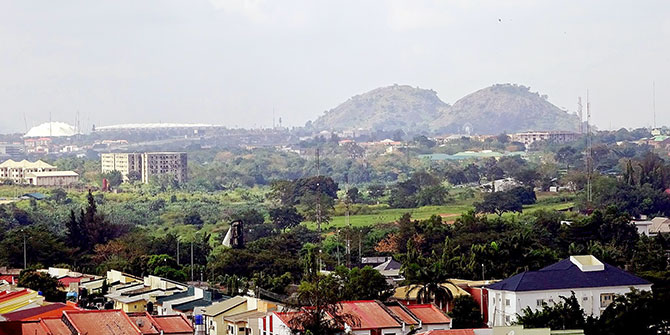As a revised and updated version of Stig Jarle Hansen’s Al Shabaab in Somalia is released, LSE’s Joanna Lewis praises the volume for providing a comprehensive history of the militant Islamist group.
Stig Jarle Hansen’s widely acclaimed book on Al-Shabaab in Somalia: The History and Ideology of a Militant Islamist Group first published in 2013, has been reissued this year with a new preface. This is surely a mark of the book’s success in delivering a comprehensive and readable account of this terror-based organisation that shows no signs of local disintegration or being swallowed up by so called Islamic State. Indeed, this book explains why.
Hansen is one of the few Western academics to be based in Somalia when conducting fieldwork on contemporary politics and violence. He has no time for ‘desk-based’ commentators operating from laptops in Nairobi. Instead, he has built up a dense network of intelligence gathering on the ground. His first book was dedicated to his friend Ahmed Dei, a child soldier in Mogadishu who made good and became an airline manager, only to be killed by local police for not giving them his mobile number. The chaotic, violent and arbitrary nature of Somalia, the world’s favourite so-called ‘collapsed state’ provided the perfect breeding ground for a movement that means Mujahideen Youth Movement or Movement of Striving Youth( الشباب).
 The author was first aware of the organisation in 2006, when it was part of rule of Sharia Courts in Mogadishu that was providing desperately needed order and stability – a positive force. Nevertheless, from that time, a more sinister sub-group was lurking in the shadows with militant commanders operating under names like Christian killer. This then is the crux of Hansen’s argument. While there is no doubt a strong element of influence from global jihad ideals drawing on medieval notions of Islam and a cosmic war with Western Christianity, local factors initially provided the movement with a ground swell of rank-and-file support.
The author was first aware of the organisation in 2006, when it was part of rule of Sharia Courts in Mogadishu that was providing desperately needed order and stability – a positive force. Nevertheless, from that time, a more sinister sub-group was lurking in the shadows with militant commanders operating under names like Christian killer. This then is the crux of Hansen’s argument. While there is no doubt a strong element of influence from global jihad ideals drawing on medieval notions of Islam and a cosmic war with Western Christianity, local factors initially provided the movement with a ground swell of rank-and-file support.
The book clinically sets out the rise and partial fall of Al-Shabaab in four phases. First, in 2005, the organisation takes its first baby steps under the umbrella for the Union of Islamic Courts in the capital. It grows in power and reputation from 2007 when it takes up arms against Ethiopian occupation. Then from 2009 to 2010, Hansen identifies the Golden Age of the organisation following victory and territorial control over southern Somalia. Finally this book documents its reversal of fortunes into the present.
This account is packed with details about all the ins and outs of the politics of the movement. We learn much about its effective capacity to deliver social goods after a sustained period of chaos and violence. It was able to collect tax, pay its men for carrying out attacks, impose a harsh interpretation of Islamic law and export Jihadi terrorists to other parts of Africa. What is missing is perhaps personal profiles of some of its operators and narratives of women’s no doubt brutal experiences but considering the parameters of gaining information as an outsider, these omissions are not surprising.

We are certainly not left surprised by Hansen’s overall conclusion; that the organisation shows no sign of slowly disappearing. Perhaps Al-Shabaab’s leaders are learning from their respected elders in violent jihad, Al-Qaeda, who are digging in locally and playing the long game. In late August, they claimed responsibility for a massive bomb explosion in Mogadishu, outside the Presidential Palace, near where a meeting was being held between security forces the Somalia Youth League. Indeed, they may have been thrown a life-line by Al-Qaeda’s retreat into supporting local insurgencies and the international focus on neutralising ISIS in Syria and Iraq.
Yet ISIS too must be creating much food for thought, despite perhaps draining it of some of its foreign insurgents. Its media presence has increased to prove its relevance and menace. Witness recently, the bizarre staging for photographers, of a sports day to celebrate Eid in south-west Somalia. Masked men attempted the high jump and competed in a sack race. As the terror group focuses on toppling the Western-backed Government and repulsing the African Union peace keeping force, is this an act of confidence or desperation? Will ISIS style ultraviolent attacks alienate the critical grass roots? We await Hansen’s next book for the answer.
Al-Shabaab in Somalia: the history and ideology of a militant Islamist Group. Stig Jarle Hansen. Hurst Publishers. 2013, 2016.
Joanna Lewis is an Assistant Professor in LSE’s Department of International History.
The views expressed in this post are those of the authors and in no way reflect those of the Africa at LSE blog or the London School of Economics and Political Science.





